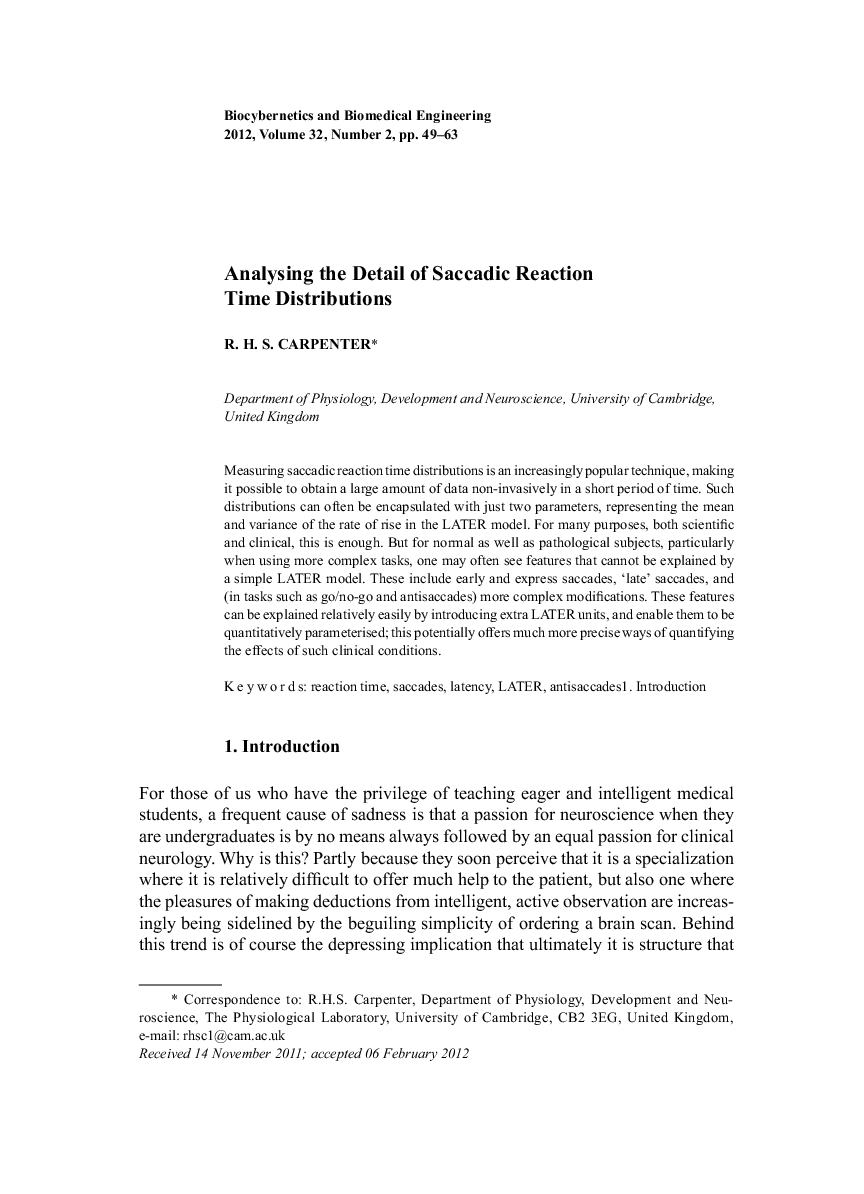| Article ID | Journal | Published Year | Pages | File Type |
|---|---|---|---|---|
| 5274 | Biocybernetics and Biomedical Engineering | 2012 | 15 Pages |
Measuring saccadic reaction time distributions is an increasingly popular technique, making it possible to obtain a large amount of data non-invasively in a short period of time. Such distributions can often be encapsulated with just two parameters, representing the mean and variance of the rate of rise in the LATER model. For many purposes, both scientific and clinical, this is enough. But for normal as well as pathological subjects, particularly when using more complex tasks, one may often see features that cannot be explained by a simple LATER model. These include early and express saccades, ‘late’ saccades, and (in tasks such as go/no-go and antisaccades) more complex modifications. These features can be explained relatively easily by introducing extra LATER units, and enable them to be quantitatively parameterised; this potentially offers much more precise ways of quantifying the effects of such clinical conditions.
